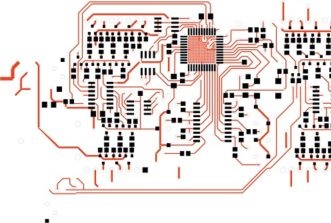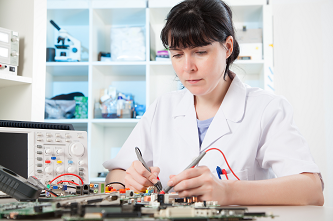How to Choose an FPGA Development Board?
16/09/2019, hardwarebee
FPGA development board is a board centered around an FPGA that allows designers to test their FPGA code in the real world. Once have designed your FPGA by creating an HDL code, you need to test the code in real life on an FPGA board. An FPGA development board is a great tool to help you test and monitor exactly what happens in your circuit with the code that you have written or the chip that you have programmed.
If you are just a beginner and are still getting into grips as to how to go about programming and synthesizing your FPGA, you will most likely want to invest in a relatively cheaper FPGA board that will help you practice your craft without compromising too much money.
If you are trying to choose an FPGA development board for a more complex project, then the selection process becomes more crucial as you must ensure that you get the board with the specifications and features that are best suited for the task you wish to execute or accomplish using it.
There are a number of features and characteristics that you need to take into consideration, some of which have been further explored here:
Peripherals
This is arguably the most important feature of any FPGA development board. The kind of peripherals you want your board to support your project requirements. If you are simply a beginner and would like to learn how the circuitry on a digital FPGA board works then you will want peripherals such as switches, LEDs, USB ports, LCD displays, push buttons, etc. On the other hand, you have some FPGAs development boards that utilize more high-end peripherals, including Gigabit Ethernet, ADC, DAC, WiFi interface, DisplayPorts, and PCI Express among other features. As a beginner, these features may not be of much use to you, but they are essential for more complex projects.
I/O Ports
Connectors or expansion I/O ports allow you to expand your module. For a beginner, it is ideal to utilize standard connectors that are easily available so that they can expand their modules later when needed without struggling to find the necessary resources. You can go for high speed connectors, such as HDMI, SATA, and DisplayPort which are also low pin count connectors, or you could opt for low speed, low pin count connectors such as headers and flat cables.
Memory
You will find that there are a variety of options when it comes to memory interfaces for FPGA boards. The straightforward options are simply SRAM and SDRAM, whereas other onboard memory interfaces include the like of DDR2, DDR3/4/5, LPDDR, and more of the sort. The kind of memory interface you opt for depends entirely on what the purpose of the chip will be. Depending on your project requirements and specifications, you can make your choice. SODIMM is one of the most widely used and acclaimed interface options when it comes to FPGAs. Some development boards that offer SODIMM connectors include the Proteus Kintex-7 FPGA development board, and the Nereid Kintex-7 PCI Express FPGA development board.
Customization
If you do not have the means, technical competence, or resources needed to customize certain aspects or specifications of the FPGA board yourself, then you will want to look for an option that offers customization in the hardware design. You can customize the number memory chips, the voltage banks, and the pin compatibility among other things. In a larger scale project, you may want to integrated the development board with other boards or systems, then you should make sure that you are choosing a board that is ready for integration with other boards.
Specifications
Make sure that before purchasing any new FPGA development board, you thoroughly browse through the specifications and documentation to get a good idea of what the product is like. You do not want to buy the product and regret your decision once it is in your hands, especially if you could have known that fact by going through the product features. You can view the pictures, dimensions, references, models, schematics, and the user manual as well. You will also want to see what tools and utilities are compatible with the product to ensure that you are not stuck with something you find difficult to use.
Simplicity and Ease
If you are a beginner in particular, you will want to find an FPGA development board that is as user friendly and simple to use as possible. A lot of modern FPGA development boards tend to be pretty complex and confusing to use, requiring a plethora of cross checking which makes the selection and purchasing process long, drawn out, and unnecessarily tedious. That is why you will want to find a board that favors ease of use over complexity so you can start out on the right foot.
Support
At the end of the day, you never know what could go wrong, which is why it is always a good idea to invest in a board for which you can get ample support from the people who know the product the best. This is especially true if you are a beginner since you are more likely to run into trouble. A good support system can help you with any issues you face during setup or during programming and will guide you through the process of fixing it, which always comes in handy if you are not too familiar with the product to begin with.












